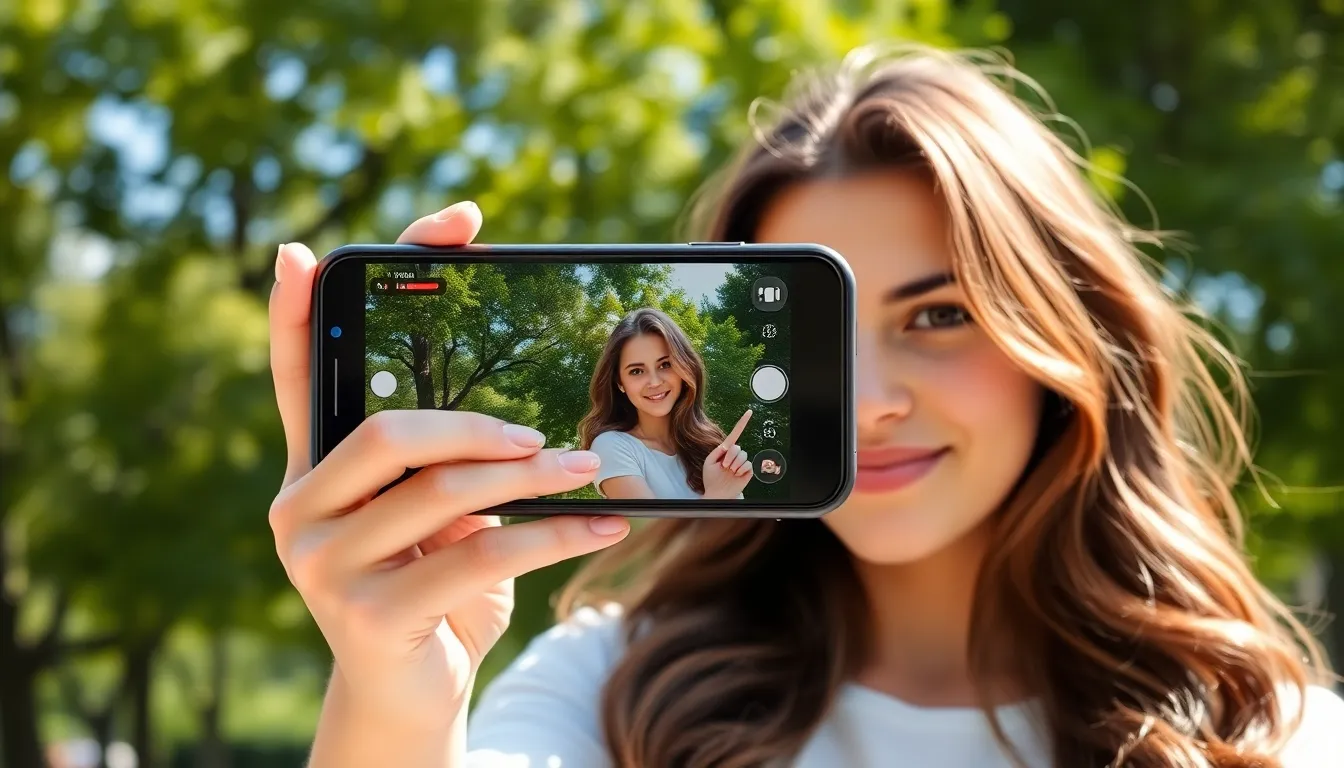Table of Contents
ToggleImagine capturing life’s most epic moments with the flair of a Hollywood director—all from the palm of your hand. With the iPhone 14’s Cinematic Mode, that’s not just a dream; it’s a reality. This feature takes video recording to a whole new level, letting users create stunning footage that highlights depth and focus like never before.
Overview of Cinematic Mode
Cinematic Mode on the iPhone 14 offers an innovative way to produce rich video content with remarkable depth. Users can create videos that automatically adjust focus, allowing the scene to shift seamlessly between subjects in real time. This feature allows transitions to be smooth, ensuring that the viewer’s attention remains where it is intended.
The advanced computational photography capabilities enhance the overall visual quality. It captures footage in 1080p at 30 frames per second, delivering impressive clarity. Users appreciate the ability to fine-tune focus after recording, giving them flexibility during the editing process.
This mode utilizes machine learning to recognize faces and objects, which enhances focus transitions. When a subject moves or turns away, the camera instinctively shifts the focus to maintain a professional look. Additionally, it supports various creative styles, allowing users to choose different focus effects that align with their unique vision.
Accessibility stands out as a key component of Cinematic Mode. It empowers users with limited filming experience to generate high-quality videos effortlessly. Creators can showcase storytelling through visuals, enhancing engagement and emotional connection. The intuitive interface facilitates ease of use, making it suitable for beginners and seasoned videographers alike.
Cinematic Mode on the iPhone 14 not only simplifies video capture but also elevates the experience. With its user-friendly controls and advanced technology, the mode invites everyone to explore their creativity through video. As users experiment, they’ll likely discover new techniques and styles that reflect their individuality.
Features of Cinematic Mode

Cinematic Mode on iPhone 14 presents several standout features that enhance video creation.
Focus and Depth Control
Focus and depth control serve as pivotal elements of Cinematic Mode. Users can adjust the focal point seamlessly during recording. This feature ensures that the subject remains sharp while the background blurs, enhancing the visual storytelling. After recording, users can modify focus points, allowing for creative flexibility. This capability elevates the editing process, making it easier to perfect the final cut. Depth of field contrasts prominent subjects against softer backgrounds, creating a cinematic look that captivates viewers. Machine learning technology recognizes faces and objects, enabling automatic focus shifts that maintain viewer engagement.
Lighting Adjustments
Lighting adjustments play a vital role in achieving high-quality video in Cinematic Mode. Users can adapt to various lighting conditions, ensuring optimal brightness and contrast in every shot. The mode automatically detects ambient light, making real-time adjustments to enhance visual quality. High dynamic range (HDR) capabilities capture intricate details in shadows and highlights, preserving image integrity. Users benefit from the ability to shoot in diverse environments, maintaining clarity and vibrancy in their videos. Enhanced low-light performance allows for stunning footage even in dim settings, further expanding creative opportunities.
How to Use Cinematic Mode on iPhone 14
Using Cinematic Mode on the iPhone 14 provides a seamless way to elevate video recording. The following steps help in making the most of this feature.
Step-by-Step Guide
- Open the Camera app.
- Select the Video mode.
- Swipe to find Cinematic Mode.
- Frame the subject in the viewfinder.
- Tap to focus on the desired subject.
- Press the record button to capture video.
Live adjustments in focus and depth enhance the visual quality throughout the recording process. Users can tap on different subjects to shift focus while shooting, providing flexibility and control.
Tips for Best Results
- Use good lighting to enhance video quality.
- Experiment with different angles for variety.
- Adjust focus points dynamically during recording.
- Keep subjects within the frame for better composition.
- Review footage afterward to refine editing choices.
Employing these techniques maximizes the effectiveness of Cinematic Mode, leading to visually stunning results.
Comparison with Previous Models
Cinematic Mode in the iPhone 14 enhances video recording, building on features found in earlier models like the iPhone 13. Previous iterations offered video capture that lacked the real-time focus adjustments now available. iPhone 14 takes this a step further, utilizing machine learning for smoother transitions between subjects, which wasn’t as advanced in its predecessors.
Video clarity sees a significant improvement in the iPhone 14, offering 1080p resolution at 30 frames per second. For context, the iPhone 13 also captured at 30 frames per second but lacked the same depth control features. The added ability to fine-tune focus after recording distinguishes it from earlier versions, giving users more creative control over their footage.
Accessibility of cinematic features has improved. While the iPhone 13 provided a user-friendly interface, iPhone 14 streamlines the experience, making it easier for beginners to achieve professional-quality results. Enhanced low-light performance also sets the iPhone 14 apart, delivering better footage in dim conditions compared to previous models.
Another distinction lies in the automatic lighting adjustments. The iPhone 14 recognizes ambient light levels more accurately than prior models, enhancing video quality without requiring manual input. High dynamic range capabilities further ensure detailed captures, marking a considerable upgrade from earlier iterations.
Overall, comparisons highlight how the iPhone 14’s Cinematic Mode surpasses previous models. The combination of advanced technology and user-friendly design invites creators of all levels to produce visually captivating content. This innovation redefines what’s possible in smartphone videography.
Pros and Cons of Cinematic Mode
Cinematic Mode offers several advantages, enhancing video recording experiences. High-quality footage remains a standout feature, with the capability to shoot in 1080p at 30 frames per second. Users appreciate the depth and focus adjustments made in real time, allowing seamless subject transitions. Accessibility also ranks high, as both novices and experienced videographers can create professional-looking content without extensive filming skills. The machine learning technology enhances focus transitions, ensuring that moving subjects maintain clarity.
Challenges exist within Cinematic Mode. Performance may vary in low-light environments despite improvements in low-light capabilities. Users might experience limitations when it comes to capturing fast-moving subjects, as the focus adjustments can lag. Editing capabilities, while robust, require additional steps to maximize creative control after filming. Those with less familiarity may find the initial learning curve challenging, despite the mode’s user-friendly design. Overall, understanding these pros and cons assists users in leveraging Cinematic Mode effectively.
The iPhone 14’s Cinematic Mode transforms the way users approach video recording. With its intuitive features and real-time focus adjustments, it empowers anyone to create professional-quality videos. This capability not only enhances visual storytelling but also encourages creativity among users of all skill levels.
While there are some challenges to consider, such as performance in low light and the learning curve, the benefits far outweigh the drawbacks. The advancements in this mode make it a standout feature that redefines smartphone videography, inviting users to explore their unique storytelling styles. Embracing Cinematic Mode can lead to stunning results that captivate audiences and elevate personal projects.




